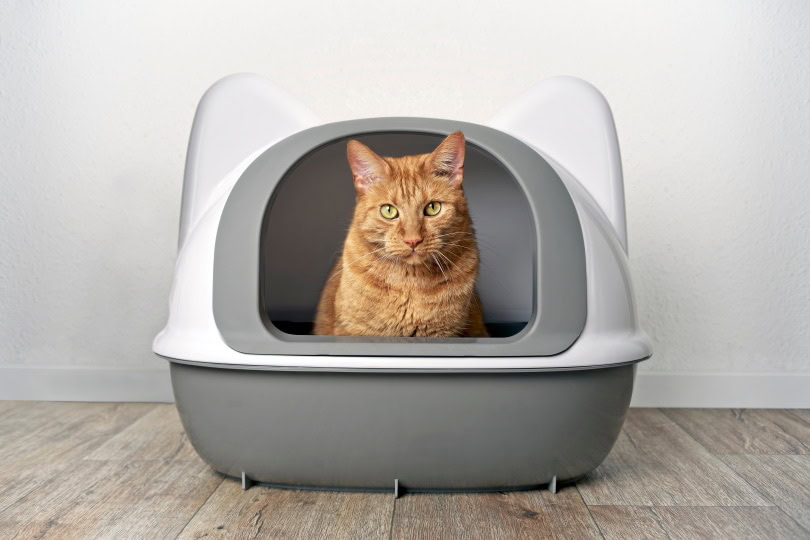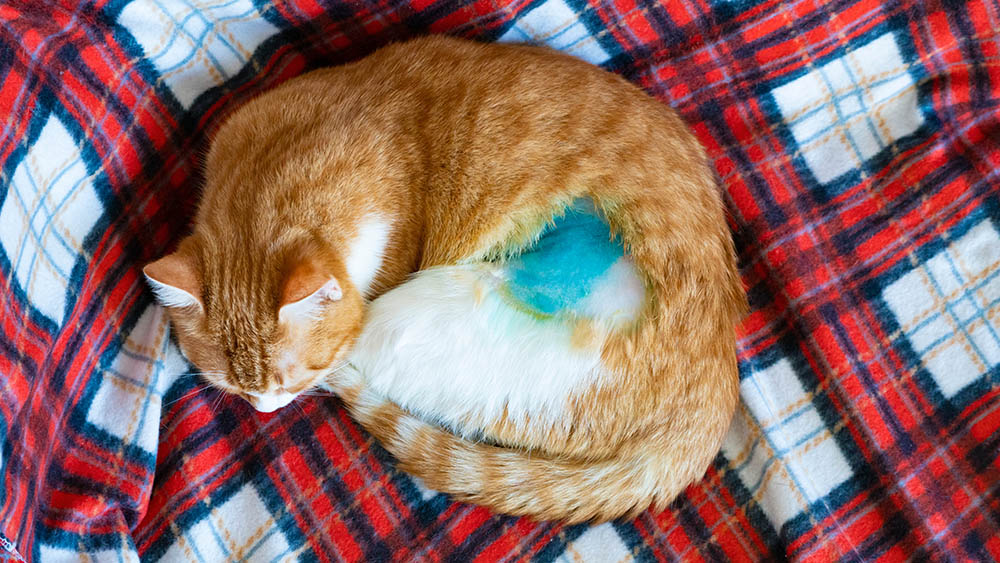VET APPROVED

The information is current and up-to-date in accordance with the latest veterinarian research.
Learn more »Click to Skip Ahead
When you think about dangerous activities, you probably think about skydiving or mountain climbing. You certainly don’t think about cleaning your cat’s litter box!
While cleaning a litter box might seem like a simple task, taking a few precautions ensures it’s done hygienically and safely. Here, we’ll show you the best way to keep your cat’s bathroom clean while minimizing any potential health risks.

Before You Start: Get the Proper Tools
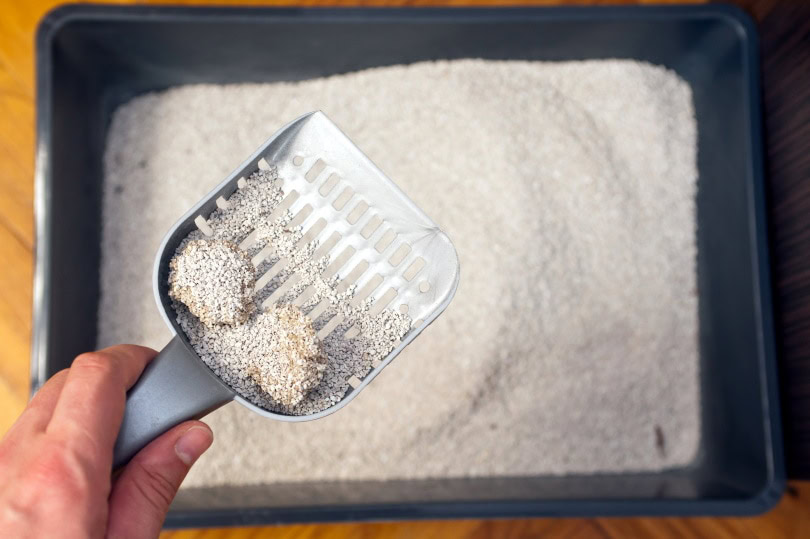
You may think that all you need to clean out a litter box is a scooper and something to put the waste in, but in fact, as with many cleaning tasks, there are a few other supplies that you should get ready.
A pair of disposable gloves, pet-safe cleaner, a scrub brush, and hand soap should also be on your checklist. Keep a trash can with a heavy bag close by, especially if you’re replacing all the litter. You don’t want to have to carry a box full of used litter far, as jostling it will stir up dust, and there’s always the risk that you could fall and send it flying everywhere (or worse, faceplant into it).
You will also want to keep other gear close at hand, such as replacement litter and liners, deodorizers, or anything else that you need.
Wondering whether an enzymatic spray or deodorizing powder is better at fighting pet odors? Compare Hepper's Pet Stain & Odor Eliminator Spray to their Litter Deodorizer Powder to see which product is best for your deodorizing needs.
| Image | Product | Details | |
|---|---|---|---|
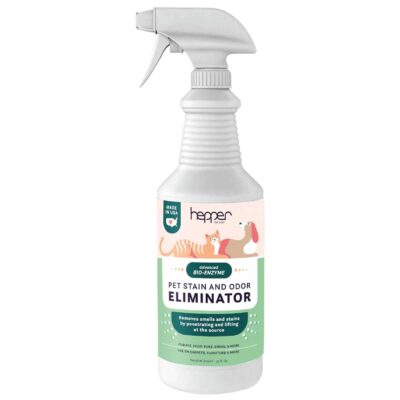 |
Hepper Advanced Bio-Enzyme Pet Stain & Odor Eliminator Spray |
|
Check Price |
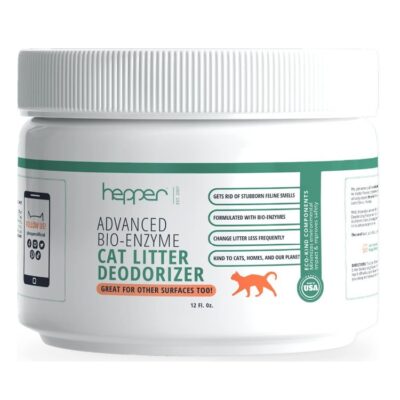 |
Hepper Cat Litter Deodorizer |
|
Check Price |
At PangoVet, we've admired Hepper for many years, and decided to take a controlling ownership interest so that we could benefit from the outstanding designs of this cool cat company!

The 5 Steps to Quickly and Safely Clean a Litter Box
If you’re not using a liner, you’ll need to clean the box thoroughly to ensure that your cat (and you) stays healthy and happy.
1. Dump Out All the Used Litter Into a Trash Can
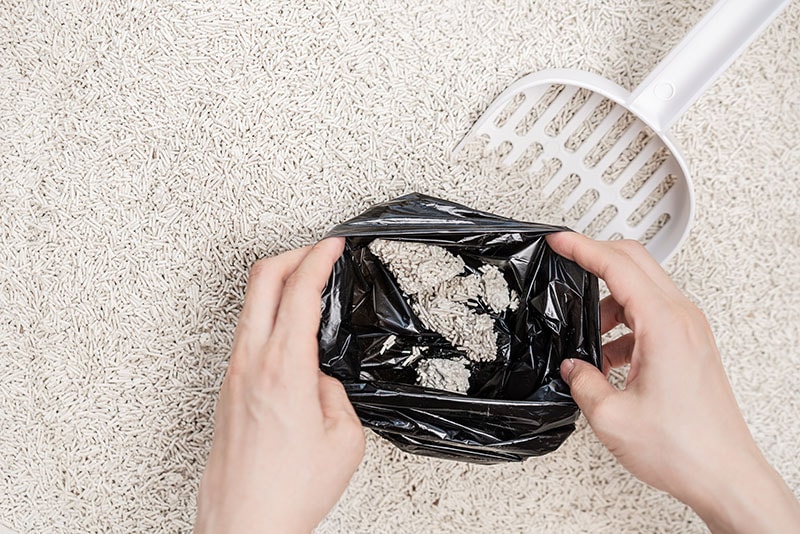
Be careful, as this will kick up a large amount of dust, so you may want to pass the job to someone else if you have respiratory issues. You should also do it outside if possible unless you like having a thin layer of litter silt over all your stuff.
2. Rinse Any Lingering Litter Off the Box, and Scrub It With Soap
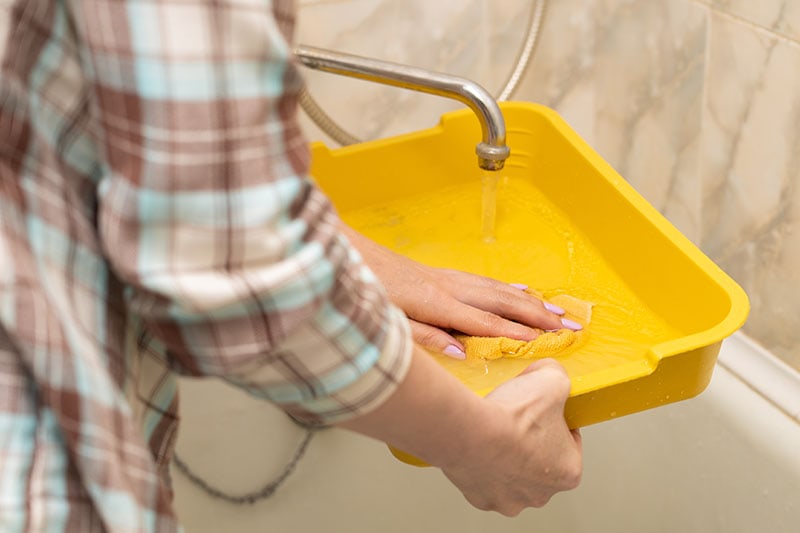
Choose a pet-safe soap that has no odor and is unlikely to leave residue, as a strong-smelling soap may cause your cat to want to avoid the litter box once it’s clean. You should also scrub the scooper and lid.
3. Rinse Everything Off Outside With a Garden Hose or Pressure Washer
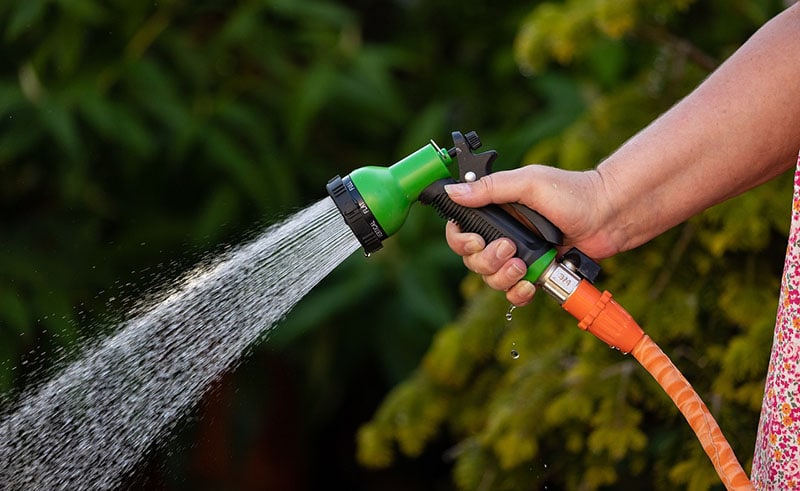
You don’t want any dirty litter getting left in your kitchen sink or coming in contact with your shower loofah, after all.
4. Inspect the Box for Cracks, Deep Scratches, or Other Damage
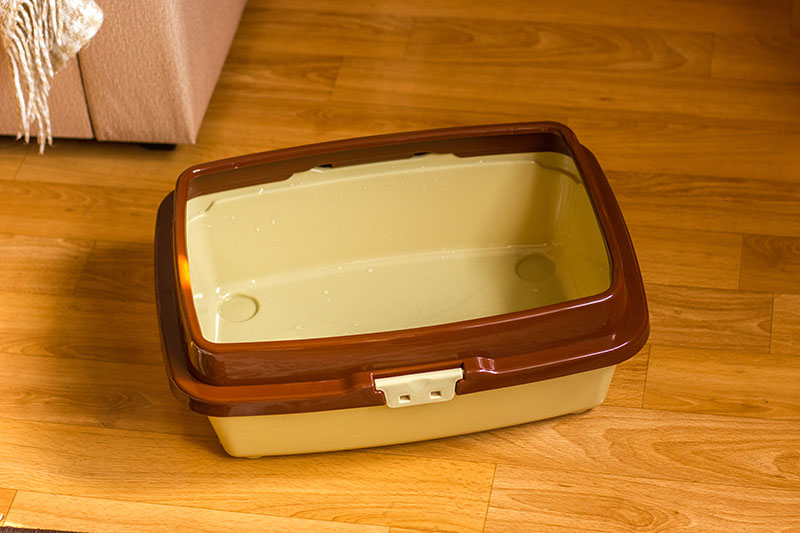
You don’t want litter (or something worse) to leak out, and scratches provide crevices for germs to hide in, making it hard to clean the box thoroughly no matter how hard you try.
5. Either Air Dry the Box or Wipe It Down
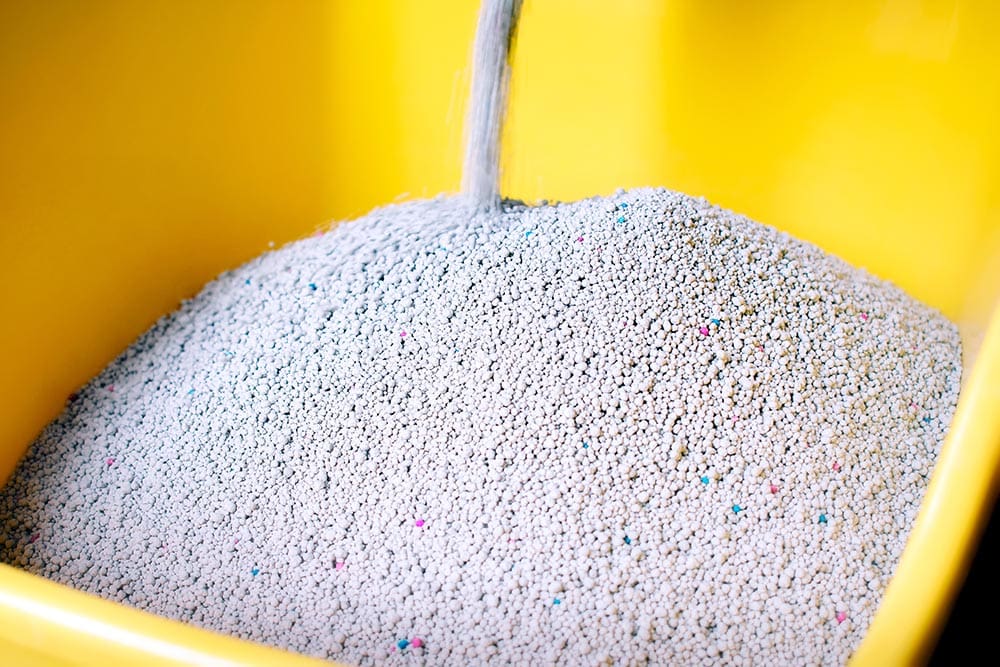
You can air dry your litter box if you have another box handy for your cat to use while it dries. If not, wipe it down with a paper towel or another cloth. Then, refill it with fresh litter and put it back where you found it!

How Is Cleaning Out a Litter Box Dangerous?
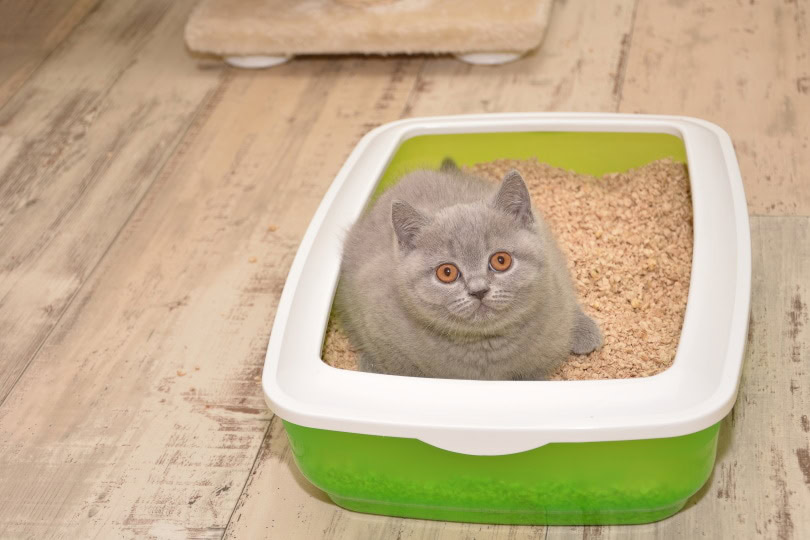
Contact with cat urine and feces can expose people to certain infectious agents that may pose health risks. Here are some of the most common concerns.
- Toxoplasmosis
Caused by the Toxoplasma gondii parasite, which cats can catch by eating raw or undercooked meat, toxoplasmosis can cause fatigue, headaches, muscle aches, and fever in humans.
However, pregnant women should avoid it at all costs, as it can cause birth defects, miscarriage, or stillbirth. Those with weakened immune systems should also be careful, as it can lead to severe signs like seizures or jaundice.
- Giardiasis
This parasite can commonly infect cats. They pass it out through their poop (which might be loose), and if you catch it, you can expect cramps, bloating, nausea, and watery diarrhea.
- Roundworms
If you see little things that look like spaghetti climbing out of your cat’s poop, your cat likely has roundworms. If they enter your system, you could suffer from cramps, organ damage, or blindness. Their eggs can survive outside of a host for years.

Cleaning vs. Scooping: What’s the Difference?
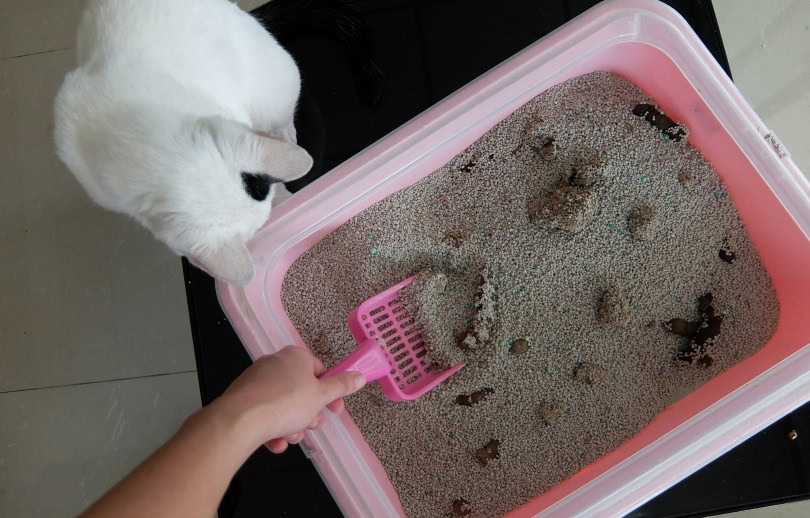
You should tend to your cat’s litter box every day. This means taking the time to scoop out any clumps of waste that you see inside and either putting them in the trash or dumping them in a storage container of some sort.
Not only will this keep your house smelling fresh and your cat’s bathroom clean and sanitary, but it also forces you to look at your cat’s waste. This is a good way to keep tabs on their health, as you’ll want to know as soon as possible if they’re not peeing much or have diarrhea or something similar.
Cleaning involves replacing every bit of litter inside the box and scrubbing the box itself. It’s a more thorough and involved job, and it should be done every few weeks, even if you’re meticulous about scooping every day.
If you use litter liners, you may not need to clean the box itself as often unless there’s been a leak. All you may need to do regularly is replace the liner and refill it with fresh litter.


Cleanliness Is Next to Catliness
Nobody enjoys cleaning out their cat’s litter box, but it’s one of those things that just has to be done. Hopefully, this guide will make the entire process safer and easier the next time that you have to do it, and with any luck, it won’t be such a miserable task moving forward.
- Related Read: Best Dog-Proof Litter Boxes – Reviews & Top Picks
Featured Image Credit: Lightspruch, Shutterstock
